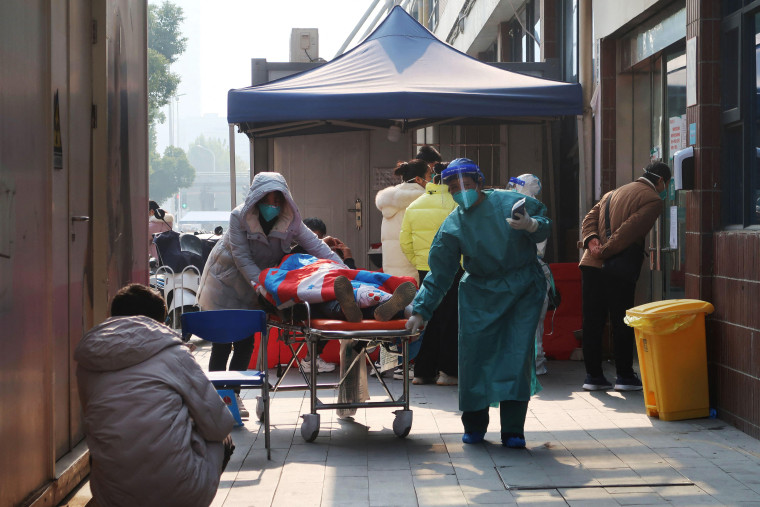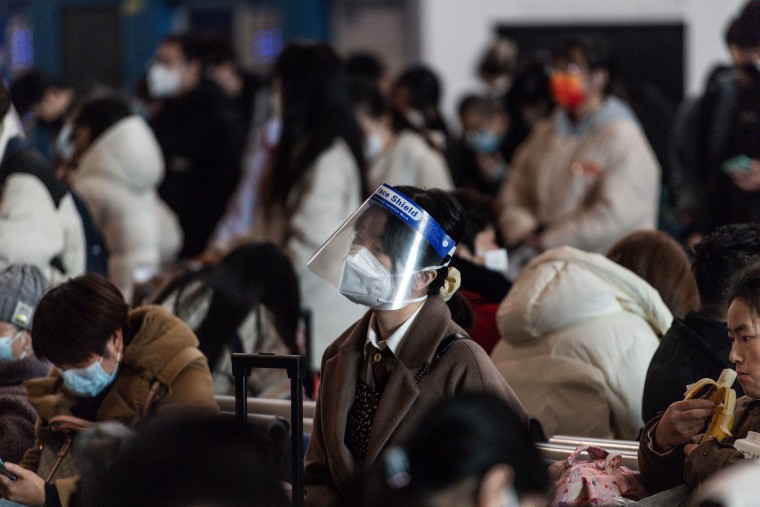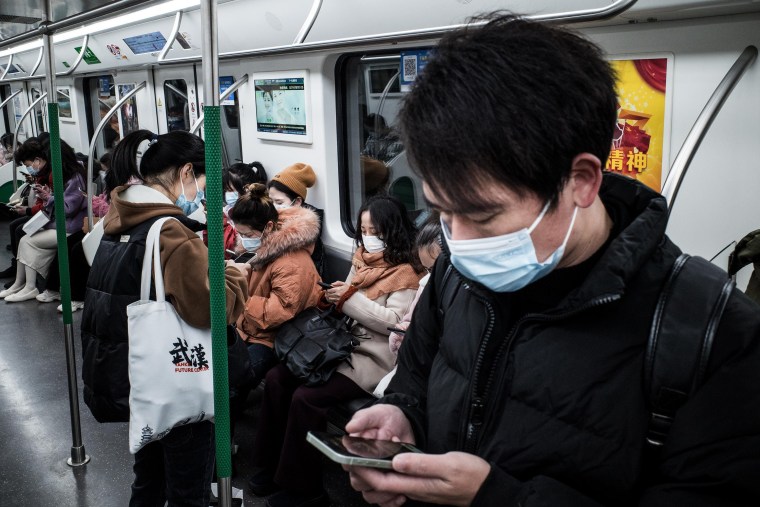HONG KONG — Three years after it recorded the world’s first cases of the coronavirus, the central Chinese city of Wuhan is once again besieged by Covid-19.
The Chinese government’s abrupt lifting of its “zero-Covid” measures following mass protests has unleashed the virus on the world’s most populous nation, which experts say is undervaccinated and has little immunity after three years of global isolation. The sudden shift has overwhelmed hospitals and funeral homes in major cities and led countries including the United States to impose new restrictions on travelers from China amid worries that the outbreak could give rise to new variants of concern.
But in contrast to early 2020, when a 76-day lockdown emptied Wuhan’s streets and the virus was deadlier, residents of the city of 11 million say the mood is more relaxed — even as they and almost everyone they know are infected with the highly transmissible omicron variant.

“People are no longer afraid of the virus,” said Jasmine Li, a 25-year-old who works at a property company. “Everyone feels that they are all going to experience a viral infection, and everyone has accepted it quite openly. People are just desperate to move in a good direction now.”
The U.S. and other governments that have announced new travel requirements cite what they say is a lack of transparent data from China, which has stopped reporting nationwide case numbers. The country of 1.4 billion people narrowly defines Covid deaths and has reported only a handful since largely lifting restrictions early this month, with an official toll of 5,246 since the start of the pandemic.
Multiple Wuhan residents interviewed by NBC News reported hearing of Covid-related deaths in their communities in recent weeks, often among people who were older or had underlying health problems. Experts, including the U.K.-based health data firm Airfinity, have predicted that China could see roughly 1 to 2 million Covid deaths by the end of 2023, compared with more than a million in the United States, which has a quarter of China’s population and one of the world’s highest Covid death rates per capita at more than 3,000 per million.
That is partly because the virus spread unchecked in the U.S. early in the pandemic, before the development of vaccines, at a time when China had virtually no cases, said Dr. David Owens, a founder of OT&P Healthcare in Hong Kong.
“I don’t see any scenario in which China ends up with a higher pro-rata mortality than the U.S.,” he said.

Chinese officials say that the “zero-Covid” strategy saved lives early in the pandemic and that the current outbreak is under control. This week they reclassified Covid-19 as a less serious disease as they shift greater focus to increasing vaccinations and treating severe cases.
“Prevention of severe diseases and deaths should be given priority at this stage,” Dr. Liang Wannian, an epidemiologist and senior government adviser, told reporters on Thursday.
Officials at the same news conference rejected claims that China is not providing genomic sequencing data from its current outbreak and said they would eventually provide more information on Covid fatalities based on analysis of “excess deaths.”
“We don’t keep anything secret, all our work is shared with the world,” said Wu Zunyou, chief epidemiologist at the Chinese Center for Disease Control and Prevention.
After the coronavirus was first identified in Wuhan at the end of 2019, China was accused of downplaying the outbreak’s severity and restricting access to information.
China’s first wave of infections following the lifting of restrictions could end by February or March, said Fujian Song, a professor at the University of East Anglia in England who has modeled the current outbreak. But the virus could arrive later in smaller, remote areas, he said, giving them more time to prepare.
While newly vaccinated people in major cities are likely to contract the virus before they are fully protected, Song said, “for some areas it may be possible that vaccination could make some difference.”
Vaccination is especially important for China’s older population, many of whom resisted inoculation for fear of side effects or because they saw little risk of infection under “zero-Covid.”
Wuhan resident Guan Zhi, 73, said he contracted the virus within days of restrictions being lifted.
“I had high blood pressure, but it didn’t feel too bad and I was fine within a week or so,” he said.
Guan said infections were widespread in his area, and that he learned two retired employees of his former work unit, a 91-year-old and a 93-year-old, had died of Covid-related causes.

“People don’t go out and my friends are afraid to go downstairs,” he said. “I also had to recover for seven or eight days before I dared to go downstairs for a walk.”
China’s Covid peak is still ahead, and because severe disease takes time to develop the full impact of the outbreak may not be clear for a while, especially among older people, said Dr. Siddharth Sridhar, a clinical virologist at the University of Hong Kong.
“It’s usually the younger, more mobile population that gets infected first,” he said. “Then it goes into nursing homes, and that’s where it does most of its damage.”
Sridhar, Owens and many other experts say that “zero-Covid” was the right strategy for China early in the pandemic, when vaccines were not available. But the country struggled to move away from it in large part because of the low vaccination rates among its older population, and then lifted restrictions all at once after the protests. Without a controlled transition, there was no time to increase vaccinations, strengthen critical care infrastructure or expand the availability of antiviral treatments like Paxlovid.
The result will be deadly, according to Sridhar.
“That means that there is going to be basically a very large outbreak, a lot of suffering, a lot of loss of life,” he said.
Wuhan resident Xie Zhicong said he and everyone in his family, aside from his grandmother, had been infected.
Xie, a 25-year-old salesman, said it was difficult to see a doctor when he went to a hospital for an examination last week.
“There were no doctors or nurses, because they all had positive symptoms,” he said.
The hospital that Xie visited did not respond to requests for comment on his claims. A pharmacist reached at a different Wuhan hospital declined to comment on the record.
People who have recovered, Xie said, are looking ahead to life after three years of “zero-Covid” restrictions.
“Some of my friends are already buying tickets for a Lunar New Year trip to Thailand,” Xie said, referring to China’s biggest holiday of the year, which in 2023 falls on Jan. 22.
Travel services companies say international flight bookings on their websites have surged since China said on Tuesday that it would resume issuing passports for tourism for the first time since the start of the pandemic.
Though many countries in places like Southeast Asia and Europe are eager for the return of high-spending visitors from China, which was the world’s biggest outbound tourism market before the pandemic, some of the top destinations for Chinese travelers — including the United States, Japan and South Korea — have made Covid testing mandatory for arrivals from the country.
Chinese state media have criticized the restrictions as “discriminatory,” while the European Union’s health agency said Thursday that additional measures for travelers from China were “unjustified.” GISAID, a public database based in Germany, said this week that analysis of the latest genomic sequencing data shared by Chinese health officials showed that the variants in China closely resemble those already circulating globally.
Though China is experiencing a massive outbreak much as it did at the start of the pandemic, once it’s over the virus won’t have many places left to go, Sridhar said.
“This might be the pandemic’s last act in a way.”